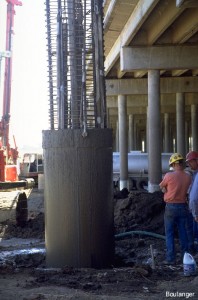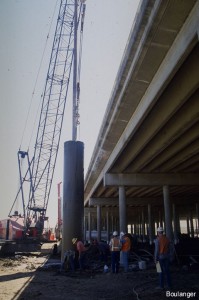Cast-in-drilled-hole (CIDH) piles were constructed along the Yolo Causeway, California, for seismic strengthening in 1998.
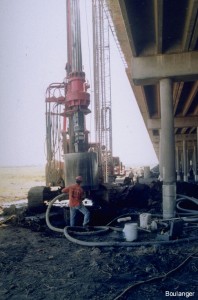
A bucket auger is used to drill large diameter holes alongside the existing causeway. The hole is supported by steel casing and kept full of bentonite slurry to prevent heaving at the bottom.
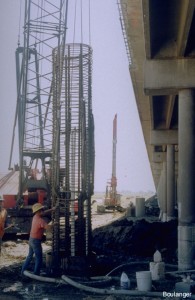
A rebar cage is positioned in the drilled hole. The cage extends to a depth of about 45 feet, and continues as an above-ground column up to the causeway deck. The white PVC tubes inside the cage allow a gamma-gamma probe to nondestructively test for defects in the completed CIDH pile.
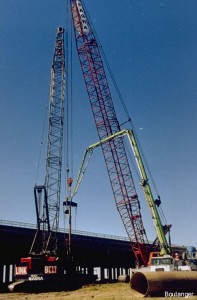
Concrete is pumped along the green boom to a steel tremie pipe that extends down inside the rebar cage to the bottom of the drilled hole. One crane will lift the steel casing. The other crane supports a set of small diameter (~1 inch) steel rods inserted inside the full length of each PVC tube. The steel rods protect the PVC tubes against damage, and will be removed after all concrete has been placed.
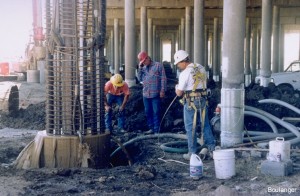
As concrete is tremied (poured) to the bottom of the drilled hole, it displaces the bentonite slurry. The slurry then spills over the top of the casing and is collected for re-use or disposal.
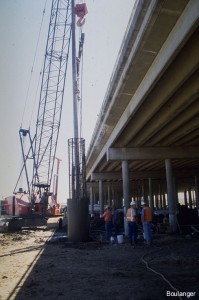
The steel casing is progressively withdrawn as the concrete level in the hole rises. The casing bottom is always kept 5 to 10 feet below the top surface of the concrete. If the casing is pulled above the concrete surface, the unsupported portion of the hole may cave in and cause a defect to the pile.

The steel casing is now out of the ground (the bottom of the casing is about head height) and will be lifted over the rebar cage of the column. Notice the wet concrete remaining on the rebar cage.
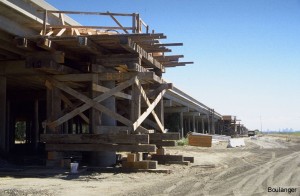
Formwork is erected for the column extension above a completed CIDH pile. The column will be tied into the causeway deck to provide lateral restraint during earthquake shakin

